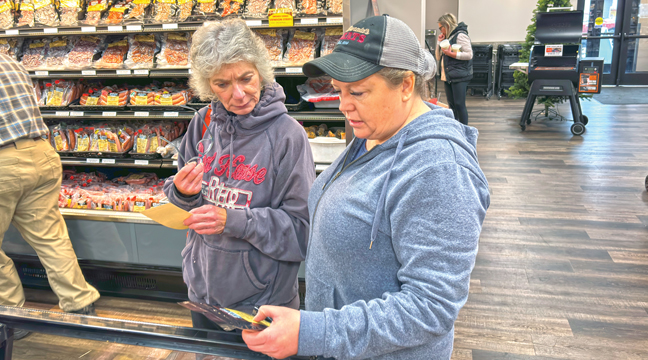We could see it moving through the tall, dull green grass of late summer, and it is moving in our direction. I told the group that we better move back and get our cameras ready. It looks like it will be walking directly towards us, and it was a big one. Next, I told the group, “For this image to work, we will need to get down low and switch from horizontal to vertical format”.
Only a minute later, my prediction was correct, it was walking straight at us. Using a very long lens so we could keep a distance, the group was able to capture some very impressive images of a male American Black Bear (Ursus americanus). This particular bear was well over 500 pounds and was getting ready for hibernation.
The American Black Bear, usually just called Black Bear, are called “American” because they are endemic (found only) in North America. Of the three bear species found in North America, it is the smallest but the most widespread bear species.
The Black Bear evolved from another bear species around four to five million years ago. Since that time, based on fossil records, the Black Bear has become smaller. Historically, the American Black Bear roamed most of North America but today is restricted to most of the Northeast, going down the Appalachian Mountains, the northern states of Michigan, Wisconsin and Minnesota. They are also found all across Canada and down the Rocky Mountains and down the west coast well into California.
Adult male Black Bears average between 200-500 pounds. Adult females are smaller and are between 100-375 pounds. Black Bears found in northern states and Canada are larger than ones found in southern states. This is a good example of the Bergmann’s rule, which is a biological rule that states the larger the animal’s body the easier it is to stay warm in the cold of winter and the smaller the animal’s body the easier it is to keep cool in the heat of summer.
I find Black Bears utterly fascinating. These critters are perfectly adapted to living in North America. Bears can do things that other animals can’t. For example, the Black Bear mating season was back in June (spring) and even now, at the end of summer, the females are still not pregnant. The bears reproductive system holds the egg and sperm in a suspended state of animation and won’t become implanted in the female’s uterine wall until Oct. It is the females over all health in autumn that determines how many fertilized eggs will go on to become cubs and will be born in Feb after only about four months gestation.
At this time of year, bears are eating as much as they can to build up enough fat to last them through winter. Hibernation can only be described as amazing. Here in the northland a bear can hibernate for upwards of seven months. During this time, the bears metabolic activities are suppressed and in some cases such as the digestive system, comes to a complete stop. Other systems such as thermal (body core temperature) only slow down. Respiration and heart rate also suppress and lower. Combined, when all of these systems are slowed down or stopped the bear saves enough energy to last until spring. Think of it as gasoline in your car, the more you conserve the longer it will last.
I think many people envision a hibernating bear as being unconscious, mouth open, tongue hanging out and snoring loudly. The reality is bears are often awake and looking around and taking care of what needs to be done. They move around regularly, and the pregnant females give birth during hibernation. After the cubs are born, she takes care to keep them warm and will also nurse the young. Also, during hibernation, bears who have any injuries often heal up nicely and by springtime are often well healed. In addition, if you and I were to lay down for seven months, our muscles would atrophy (muscle loss) so bad that we would need to learn how to walk again. Bears lay down for the same amount of time and don’t have any issues with muscle loss.
As you can see, bears are amazing creatures and have the ability to do things other mammals are unable to do. Until next time…
Stan Tekiela is an author / naturalist and wildlife photographer who travels the U.S. to study and capture images of wildlife. He can be followed on www.Instagram.com, www.Facebook.com and www.Twitter.com. He can be contacted via his web page at www.NatureSmart.com.







